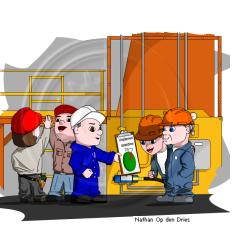
As I watched the show I was impressed with the meticulous nature of the two plus years of planning and preparation for the repair and maintenance activities. Of course the margin for error on the mission was near zero. If the astronauts encountered problems that were not accounted for during the planning and training phases, the chances of success for the mission would be minimal.
All procedures from working with the smallest threaded fastener to moving eight hundred pound assemblies had to be carefully choreographed well in advance of the mission. Each task had to be scripted and practiced numerous times by the astronauts in the Neutral Buoyancy Laboratory swimming pool in Houston. If the procedures for tasks did not practice well, the procedures were rewritten and then tested and practiced again. You can read the transcript of the program here
The total number of people and teams that prepared the astronauts for the Hubble work was impressive. The complexity and thoroughness of the planning, procedure writing and training was impressive. Training was carried out right up to the time when the actual final mission began.

If we compare this space mission to an industrial maintenance event (shut down), then the astronauts were the tradespersons and the heavy equipment operators who worked with the tools, materials and components at the workface. Every possible effort was made by the mission engineers, planners and trainers to ensure success in orbit. The astronauts were the front line, the final expression of an enormous team effort. To have prepared the astronauts in an ad hoc or random fashion would have brought disappointment for many players and stakeholders.
The same holds true for an industrial team during a plant shut down. The front line trades and equipment operators need to work from the best possible preparation and planning in order to help them achieve an efficient work cycle. They also need the best possible training to make sure they are ready to solve problems as they arise. Problem solving is, after all, the reason why humans are needed to complete the complex work carried out during a shut down.
If you catch the program on PBS, be sure to watch for the glitches and problems that crop up during the actual work on the telescope and how the teams and support experts work together to solve them.
